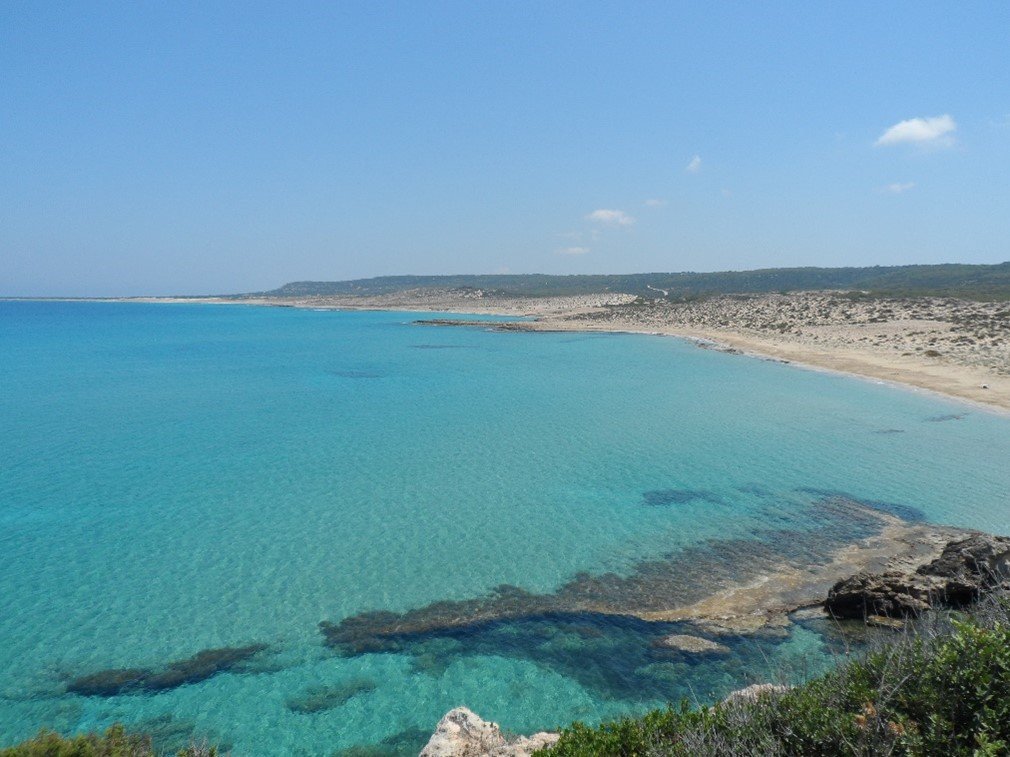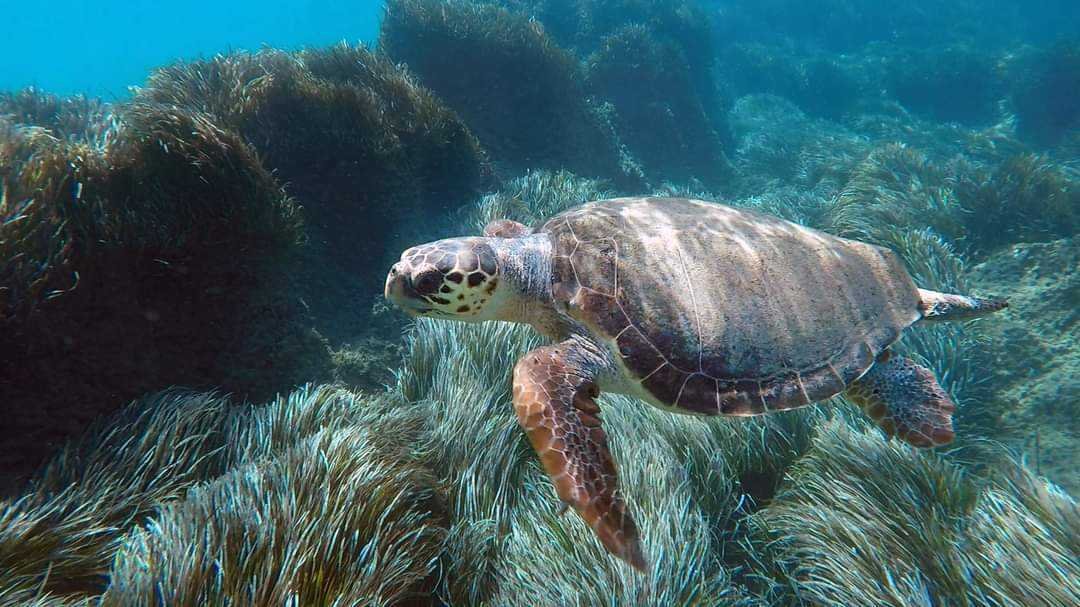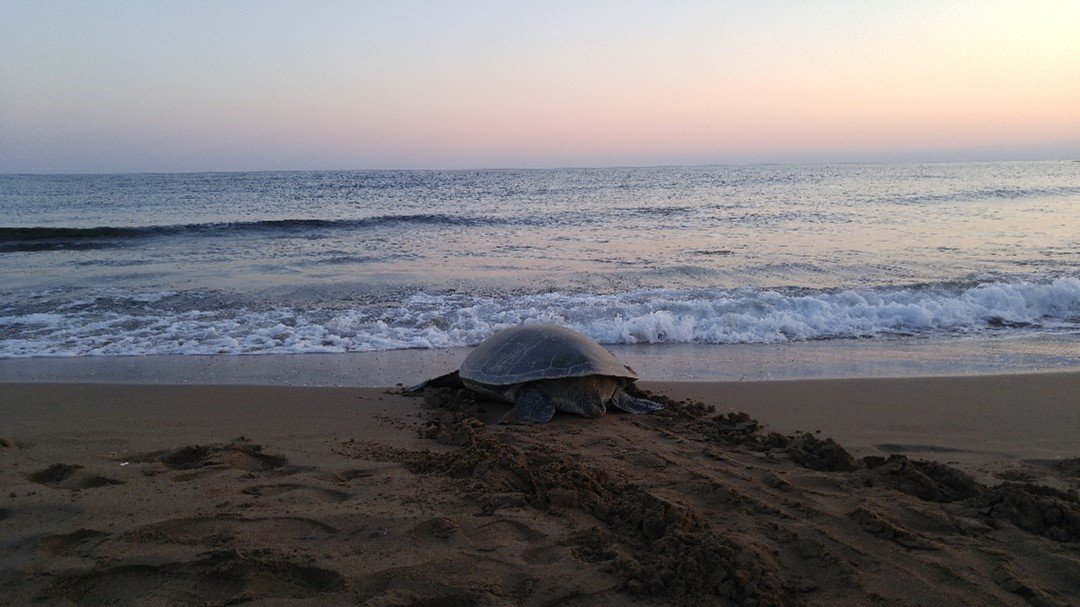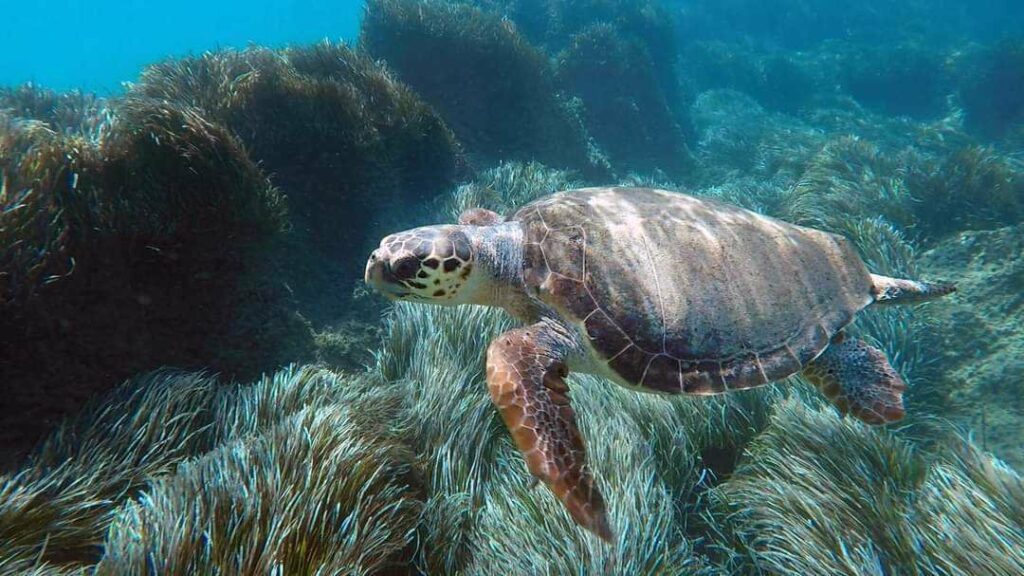
Photo by John Rich
It is winter here in Alberta, Canada and we are dreaming of warmer temperatures. To turn the thermostat up a few notches, AJM’s Biologist, John Rich, transports us to the remote beaches of the Turkish Republic of Northern Cyprus in this latest post about his past work with endangered Marine Turtles!
A career in biology can involve working with a large variety of exciting animals, and with a little bit of luck, sometimes these species are found in equally exciting (and warmer!) locations. Fortunately, funding is often readily available for protecting species that the average citizen finds appealing, aka the ‘cute & cuddly’. The peaceful and majestic marine turtle is no exception to this. However, unfortunately, it is due to their appealing qualities that nearly all seven species of sea turtles found on Earth are listed as endangered! Their shiny-shells (jewelry), their supposedly tasty meat and eggs (Winston Churchill’s favourite meal was famously reported as being green-turtle soup), and fishing bycatch are all leading causes of marine turtle population decline. Poaching of sea turtle eggs is still a large driver of population declines, in addition to loss of habitat (building on beaches), as well as climate change.
True or False?
The temperature of sand where a turtle lays its eggs will determine the sex of a turtle. (Read on to find out the answer!)

Photo by Society for Protection of Turtles (SPOT)
Marine turtles are a fascinating animal. Besides their majestic grace and seemingly effortless movements in the shallows of tropical waters, there are several characteristics that make marine turtles a fantastic study species. Each species has unique appeals, from the gentle giants of the Leatherbacks (the largest recorded being just under 8ft!) to the mass nesting movements of the Kemp’s and Olive Ridleys (imagine beaches full of thousands of small marine turtles, all nesting at the same time!). Northern Cyprus primarily sees Loggerheads and the famous Green turtles. Loggerhead turtles are named for their unusually large heads and strong jaws that allow them to eat hard-shelled organisms such as clams. This is unlike their photogenic herbivore “surfer-dude” cousins, the Green turtles, who feed mostly on Sea Grass. Did you know that although these turtles will swim hundreds of kilometres (or thousands, in some cases!) each year, they will remember the exact beach where they hatched from and often return to that same beach to lay their eggs? This is made all the more fascinating by the fact that Green turtles are first able to lay eggs when they reach sexual maturity around 25 years old!

Photo by John Rich
During John’s time studying Green turtles, he and his team were primarily interested in protecting turtles’ eggs from predation and increasing the chances for the young hatchlings to survive to adulthood. It is currently estimated that only 1 in 1000 hatchlings make it to adulthood. Since hatchlings try to make it to the open ocean at less than 1 day old, this is often the biggest survival challenge they face. By protecting eggs and hatchlings from predation, John and his team were hoping to increase the odds of the hatchlings surviving to adulthood. Knowing that it takes around 25 years for the turtles to reach maturity and return to lay eggs of their own, mean they won’t know if their efforts were successful for another 25 years. John and his team were also interested in recording the parents, either by tagging the individual on the flipper, or by recovering an egg shell for genetic analysis.
True!
Temperatures higher than about 88F will lead to primarily female hatchlings. Although increasing the number of ladies out there may sound like a good thing to some, without the proper male/female ratios, successful mating can become much more challenging!
Although marine turtles seem majestic in the ocean, on land they are rather graceless as they move with great difficulty. Weighing an average of 300lbs and being up to 5ft in length, Green turtles’ relatively small flippers are not made to carry them on land. Instead, the turtles will slowly drag themselves along the shore, creating large tracks as they do, to find a suitable nesting spot. The turtles quickly become exhausted during their treks and need to take many breaks. Knowing that they are an easy prey on land, they will often only come on shore on dark, overcast nights, or when they see nothing suspicious lurking nearby. Researchers trying to catch sight of the turtles laying their clutch often pretend to be a rock, or hide behind a pile of sand, to not spook the turtles. Once a turtle finds a suitable nesting spot, she will begin digging a hole with her back flippers. Since she will lay around 100 eggs each time she comes ashore, the hole she digs can be up to a meter deep! Needless to say, this process is often an all-night affair. Researchers will get in their “rock” position, hopefully out of reach of the discarded sand being flung in every direction, with a thermos of coffee in reach and listen to sounds of flippers on sand under the light of the Milky Way and with a warm Mediterranean breeze in the air.
Fun Fact: A turtle eggshell consists of the mother’s DNA and is formed around the fertilized egg during the laying process!

Photo by John Rich
Once a turtle deems her hole is a suitable depth, the digging stops and the laying process begins. The nesting female enters a sort of hormonal trance, where she becomes completely oblivious to anything around her and focuses only on laying her eggs. It is during this time that researchers are able to approach the turtle, measure her size, record her flipper tag – or provide a new one in a manner similar to tagging a cow’s ear, and witness her creating eggs right before their eyes. A freshly laid egg is soft and has the consistency of a marshmallow. Over the next day or so, the egg shell will harden to the feel of a ping-pong ball and then finally to that of a chicken egg. When she has finished laying her 80-120 eggs, the turtle will use her flippers to cover the hole with sand (and anything else within the area). If you happen to get hit with one of her flippers during this process, you will quickly become aware of the immense strength behind each stroke. Once finished, with the sun peaking on the horizon, the mother turtle slowly drags herself back to the ocean, leaving her eggs/young to fend for themselves. The same turtle will repeat this process another 2-3 times over the next week before taking a 4-year break.

Photo by John Rich
Around two months after the eggs are laid, the group of tiny turtles begin to hatch and, working together, will dig their way out of their hole. The hatchlings will stay near the surface, buried under a thin layer of sand, and wait for the temperature of the sand to cool off – indicating nighttime and a better chance of surviving their dash to the ocean. Compared to the massive size of the adult turtles, these hatchlings easily fit in the palm of your hand, measuring only around 10-15cm in length. Once it is considered an appropriate time, the group of hatchlings all dash to the ocean, as fast as their little flippers can take them. After battling the relatively giant waves crashing along the shore, these coaster-sized turtles are now all on their own. Although life will be tough for many of these little turtles, those that are strong enough, and lucky enough, will return to these same shores in about 25 years to mate, lay their eggs, and to be observed by new enthusiastic young researchers.
Researchers interested in wildlife and biology often find themselves chasing down exciting, unique opportunities. Although AJM hasn’t had the opportunity to work with marine turtles (yet!), the skills learned through exciting opportunities such as this are often applicable on the job site as well. Whether it is staying up all night catching Kangaroo Rats, or using similar tagging methods on Prairie Rattlesnakes, our team of biologists bring a wide variety of skills to the table. It is this sort of thirst for knowledge and unique experiences working with an array of endangered species that make them ready, and excited to tackle any sort of problem they are faced with.

Photo by Society for Protection of Turtles (SPOT)
